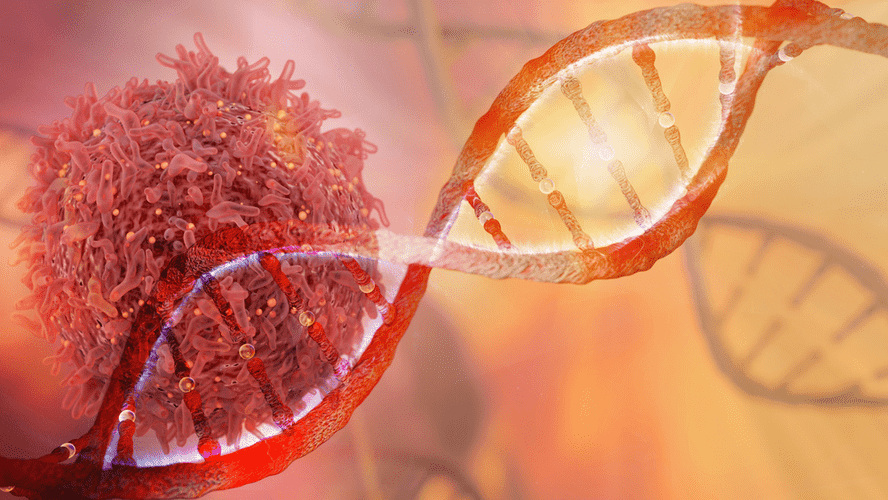Contents
Naltrexone should not be started until several (typically 7–10) days of abstinence from opioids have been achieved. This is due to the risk of acute opioid withdrawal if naltrexone is taken, as naltrexone will displace most opioids from their receptors. The time of abstinence may be shorter than 7 days, depending on the half-life of the specific alcohol addiction symptoms, abuse stats, withdrawal effects opioid taken. Some physicians use a naloxone challenge to determine whether an individual has any opioids remaining. The challenge involves giving a test dose of naloxone and monitoring for opioid withdrawal. The most common side effects reported with naltrexone are gastrointestinal complaints such as diarrhea and abdominal cramping.
The safety of naltrexone in pregnancy has not been well established. A small number of studies have been published in recent years, typically looking at the safety of sustained release preparation in women with an opioid use disorder. Preliminary evidence suggests that naltrexone may have some advantages over methadone and buprenorphine, including a reduction in the incidence of neonatal opioid withdrawal syndrome, larger birth weight, and shorter length of hospital stay following birth. Derivative of noroxymorphone that is the N-cyclopropylmethyl congener of naloxone.
The aim of the treatment is clinically significant weight loss. This level of weight loss, although modest, is shown to improve medical outcomes if maintained in the long term. Naturally, as the weight loss increases, the morbidity decreases, as exemplified in bariatric surgery, which routinely provides a loss of 30% or more TBW. NNT is a summary statistic that denotes the number of patients needed to be treated to get one positive clinically significant outcome compared to placebo.17 Lower numbers correlate with better outcomes and most effective medications in medicine have an NNT between 2 and 4. If you have any questions about this drug, please talk with your doctor, nurse, pharmacist, or other health care provider. After receiving a dose of naltrexone, the blocking effect slowly decreases and completely goes away over time.
- On the other hand, naltrexone is used to treat dependency on opioids and alcohol.
- You should not be drinking at the time you receive your first Naltrekson injection.
- When all else fails, there is still bariatric surgery, which is very effective in producing lasting weight loss.73 Over the years, bariatric surgery techniques have developed to the point that it has become safer.
- If you think there has been an overdose, call your poison control center or get medical care right away.
- As microspheres of naltrexone by intramuscular injection , the elimination half-lives of naltrexone and 6β-naltrexol are both 5 to 10 days.
Naltrexone has also been under investigation for reducing behavioral addictions such as gambling or kleptomania as well as compulsive sexual behaviors in both offenders and non-offenders (e.g. compulsive porn viewing and masturbation). In one study, the majority of sexual offenders reported a strong reduction in sexual urges and fantasies which reverted to baseline once the medication was discontinued. Case reports have also shown cessation of gambling and other compulsive behaviors, for as long as the medication was taken. Naltrexone was first made in 1965 and was approved for medical use in the United States in 1984. Naltrexone, as naltrexone/bupropion , is also used to treat obesity.
Naltrexone is sometimes used in the treatment of dissociative symptoms such as depersonalization and derealization. Blockade of the KOR by naltrexone and naloxone is thought to be responsible for their effectiveness in ameliorating depersonalization and derealization. Since these drugs are less efficacious in blocking the KOR relative to the MOR, higher doses than typically used seem to be necessary. The closely related what alcohol dehydrates you the most doctors explain medication, methylnaltrexone (N-methylnaltrexone), is used to treat opioid-induced constipation, but does not treat addiction as it does not cross the blood–brain barrier. Nalmefene (6-desoxy-6-methylenenaltrexone) is similar to naltrexone and is used for the same purposes as naltrexone. Naltrexone should not be confused with naloxone (N-allylnoroxymorphone), which is used in emergency cases of opioid overdose.
Footer Social
This Treatment Improvement Protocol reviews the use of the three FDA-approved medications used to treat OUD. Talk to your physician for guidance, or for more information on the safe disposal of unused medications, visit FDA’s disposal of unused medicines or DEA’s drug disposal webpages. Patients on naltrexone, who discontinue use or relapse after a period of abstinence, may have a reduced tolerance to opioids. Therefore, taking the same, or even lower doses of opioids used in the past can cause life-threatening consequences.

As with many non-agonist treatments for addiction, Naltrekson is of proven value only when given as part of a comprehensive plan of management that includes some measure to ensure the patient takes the medication. This medication is also used to prevent relapse to opioid abuse, after opioid detoxification. There are specific as well as general uses of a drug or medicine.
Opioid Treatment Program Contacts
A Risk Evaluation and Mitigation Strategy is required for the long acting injectable formulation to ensure that the benefits of the drug outweigh its risks. The pill form can be taken daily for AUD, but the extended-release injectable formulation is approved for the treatment of OUD. The pill form is taken daily and the extended-release injectable is administered every four weeks, or once a month, by a practitioner. A drawback of injectable naltrexone is that it requires patients with opioid use disorder and current physiological dependence to be fully withdrawn before it is initiated to avoid a precipitated opioid withdrawal that may be quite severe. In contrast, initiation of buprenorphine only requires delay of the first dose until the patient begins to manifest at least mild opioid withdrawal symptoms.
Patients who try to overcome this blocking effect by taking large amounts of opioids may experience serious injury, coma, or death. Naltrexone is a medication approved inpatient rehab for alcoholism by the Food and Drug Administration to treat both alcohol use disorder and opioid use disorder . Naltrexone belongs to a class of drugs known as opiate antagonists.
Naltrexone Trainings
Naltrexone has been reported to reduce feelings of social connection. Studies on whether naltrexone can decrease the pleasurable effects of listening to music are conflicting. Besides humans, naltrexone has been found to produce aversive effects in rodents as assessed by conditioned place aversion. Assessment of the descriptive elements in the participant’s recovery process will be performed using brief structured interviews with the involved health-and social workers. Interviews can be done by telephone or on the net such as teleconference, if feasible. Naltrekson oral can cause side effects that may impair your thinking or reactions.

The patients involved were generally clinically asymptomatic, and the transaminase levels of all patients on whom follow-up was obtained returned to baseline values in a matter of weeks. Naltrexone is an antagonist of µ, δ, and κ opiate receptors, although its actions are most pronounced on µ opiate receptors.5 It does not have any other known actions in the brain. It is available in a 50 mg generic oral preparation and a 380 mg brand-name depot injectable form. The oral form is approved by the US Food and Drug Administration for alcohol dependence and is shown to decrease cravings for alcohol. The injectable form is approved for alcohol dependence as well as opiate addiction. In both forms it completely blocks opiate receptors, which may cause dramatic opiate withdrawal in ongoing opiate users, while also completely negating both euphoric and therapeutic antinociceptive effects of opioids for nonusers.
Low-dose naltrexone
Oxycodone and naltrexone combination is used to relieve severe pain. It belongs to the group of medicines called narcotic analgesics . Oxycodone acts on the central nervous system to relieve pain. A non-rewarding, non-aversive buprenorphine/naltrexone combination attenuates drug-primed reinstatement to cocaine and morphine in rats in a conditioned place preference paradigm. Effects of acute oral naltrexone on the subjective and physiological effects of oral D-amphetamine and smoked cocaine in cocaine abusers.
Be careful if you drive or do anything that requires you to be awake and alert. Tolerance to the opioid antagonist effect is not known to occur. Nose bleeds, phlebitis, edema, increased blood pressure, non-specific ECG changes, palpitations, tachycardia.
Patients who are scheduled for bariatric surgery
The opioid antagonist is thought to block the positive reinforcement effects of alcohol and may assist the person to stop or reduce their drinking. Is enrolled in the Norwegian national opioid maintenance treatment program ‘LAR’ before discharge from a controlled environment. For subjects who complete & submit their LAR application while in a controlled environment, the investigator may complete enrolment data collection while awaiting response on LAR admission.
However, people who have continuing pain should not let the fear of dependence keep them from using narcotics to relieve their pain. Mental dependence is not likely to occur when narcotics are used for this purpose. Physical dependence may lead to withdrawal side effects if treatment is stopped suddenly. However, severe withdrawal side effects can usually be prevented by gradually reducing the dose over a period of time before treatment is stopped completely. A randomized, double-blind, placebo-controlled study of the effect of sustained-release bupropion on blood pressure in individuals with mild untreated hypertension. After you get a dose of this drug, its blocking effect on opioids will go away over time.
It works in the brain to prevent opiate effects (such as feelings of well-being, pain relief). Some historians and sociologists have suggested that the meanings and uses attributed to anti-craving medicine, such as naltrexone, is context-dependent. If the «rush» generated by self-injury is removed, the behavior may stop. The absorption of naltrexone with oral administration is rapid and nearly complete (96%). The bioavailability of naltrexone with oral administration is 5 to 60% due to extensive first-pass metabolism.
It has been suggested that differences in findings between acute and longer-term studies of naltrexone treatment might be related to altered function in the opioid system with chronic administration of naltrexone. For example, marked upregulation of opioid receptors and hyper-sensitivity to opioids have been observed with naltrexone in preclinical studies. Another possibility is that the central opioid system may have low endogenous functionality in most individuals, becoming active only in the presence of exogenously administered opioid receptor agonists or with stimulation by endogenous opioids induced by pain or stress. A third possibility is that normal individuals may experience different side effects with naltrexone than people with addictive disease such as alcohol or opioid dependence, who may have altered opioid tone or responsiveness.
Naltrexone levels following a 380 mg dose of naltrexone in microspheres by intramuscular injection at steady state during monthly treatment with 380 mg naltrexone in microspheres. Naltrexone has been best studied as a treatment for alcoholism. Naltrexone has been shown to decrease the quantity and frequency of ethanol consumption. It does not appear to change the percentage of people drinking. Studies to evaluate possible interactions between Naltrekson and drugs other than opiates have not been performed. Consequently, caution is advised if the concomitant administration of Naltrekson and other drugs is required.


Comentarios recientes